[Asters: The Genera Canadanthus, Eucephalus, Eurybia, Oreostemma and Symphyotrichum Found East of the Cascade Mountains of Oregon and Washington]
Crag Aster, Lava Aster
Ionactis alpina
Synonym: Aster scopulorum
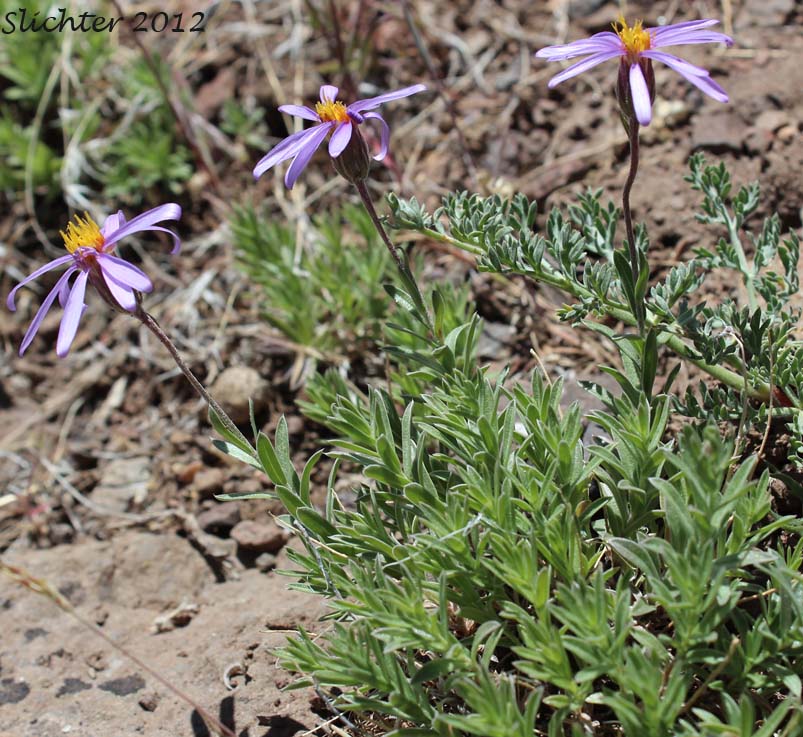
Crag aster as seen atop Domingo Pass, Pueblo Mountains of southeastern Oregon..........May 31, 2012.
Characteristics:
Crag aster is an attractive perennial with one to several erect or ascending
stems from 4-15 cm high. The numerous leaves are narrowly elliptical, measuring
5-15 mm long and 1-3 mm wide with entire margins.
The flower heads are solitary atop the stems. The involucre measures 7-11
mm high with shingled bracts, covered with short glandular hairs. The rays are
pink, blue or violet, with about 8 to 13 thin rays, each measuring from 6-15
mm long. The central disk measures about 7-13 mm wide and is yellowish. Crag
aster flowers from May to July.
Habitat:
Crag aster is found on dry, open places, often with sagebrush, from the lowlands
to 3300 m.
Range:
Crag aster may be found from south-central Oregon east to Powell Co., Montana,
south to Utah and Mono County, California.
 -
- 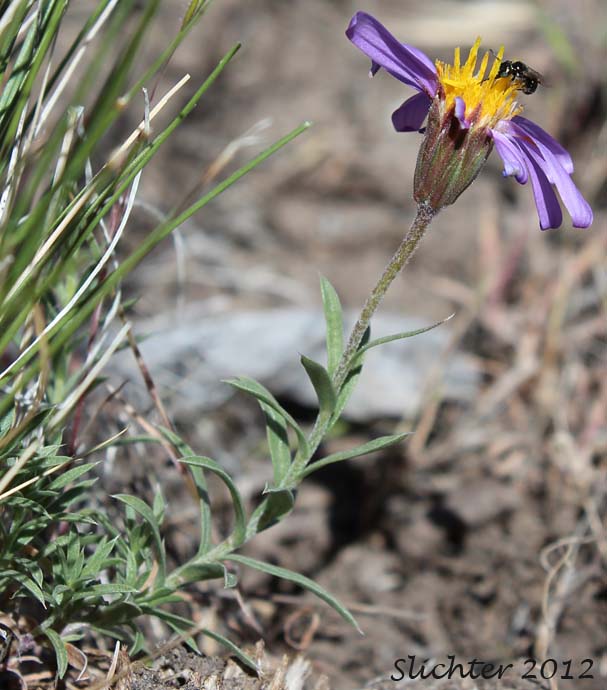
Additional close-up images of crag aster (including a pollinator) as seen on rocky slopes near a gravel pit at the crest of Long Hollow Pass in the southern Steens Mountain of southeastern Oregon.........May 31, 2012.

Crag aster blooming along the Fremont National Recreation Trail #160 at about 7400' on the southeastern shoulder of Crook Peak, Fremont-Winema National Forest......June 28, 2019.
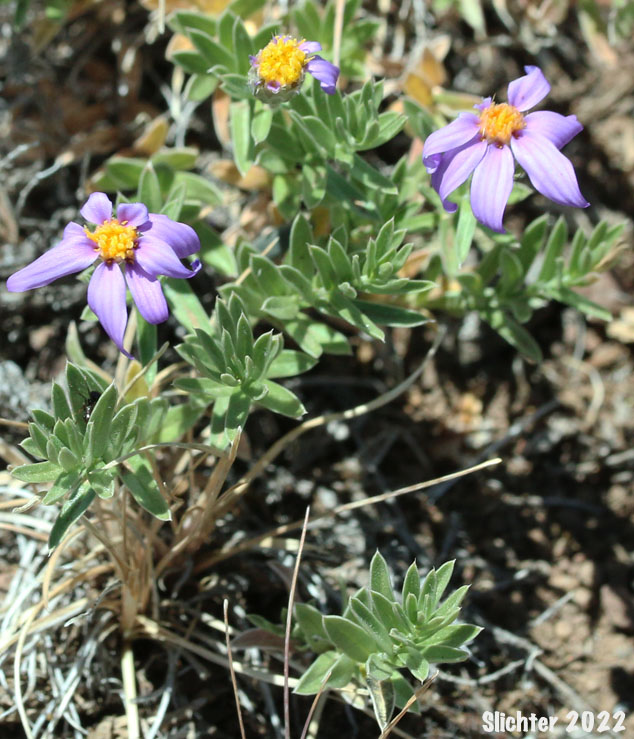 -
- 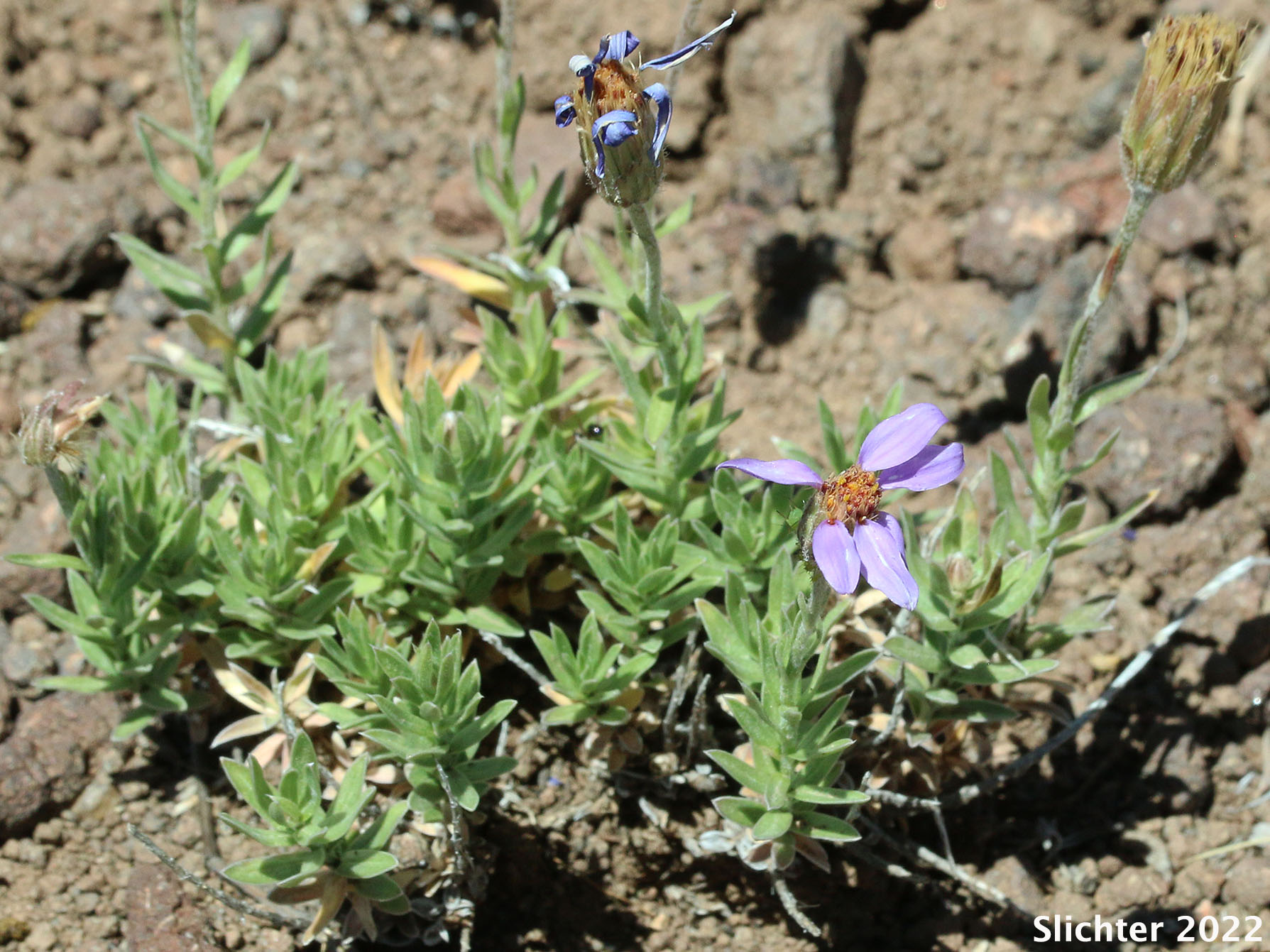
Crag aster fading out of bloom on scablands at about 7800' along the Fremont National Recreation Trail #160 on the north side of Twelvemile Peak, Fremont-Winema National Forest......July 16, 2022.
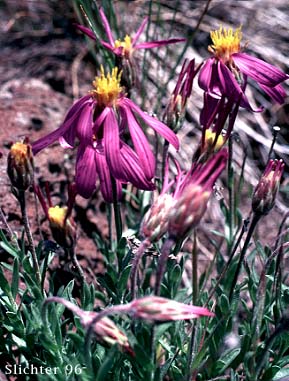
The photo above shows crag aster as seen from between Summer Lake, OR and Picture Rock Pass.........May
26, 1996.
Paul Slichter